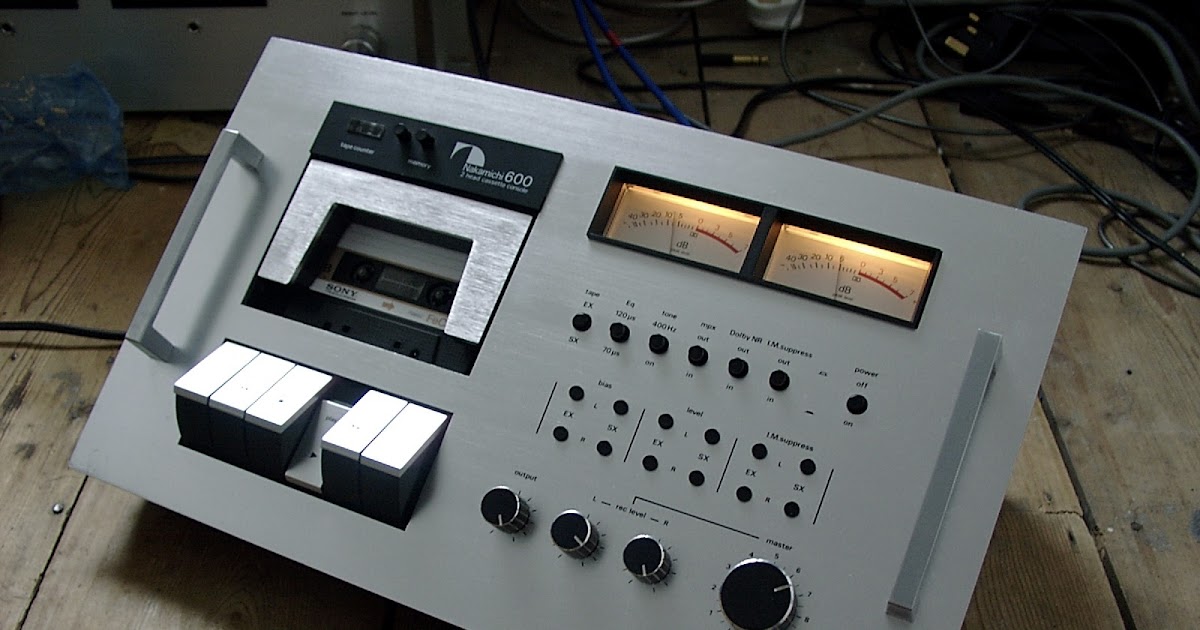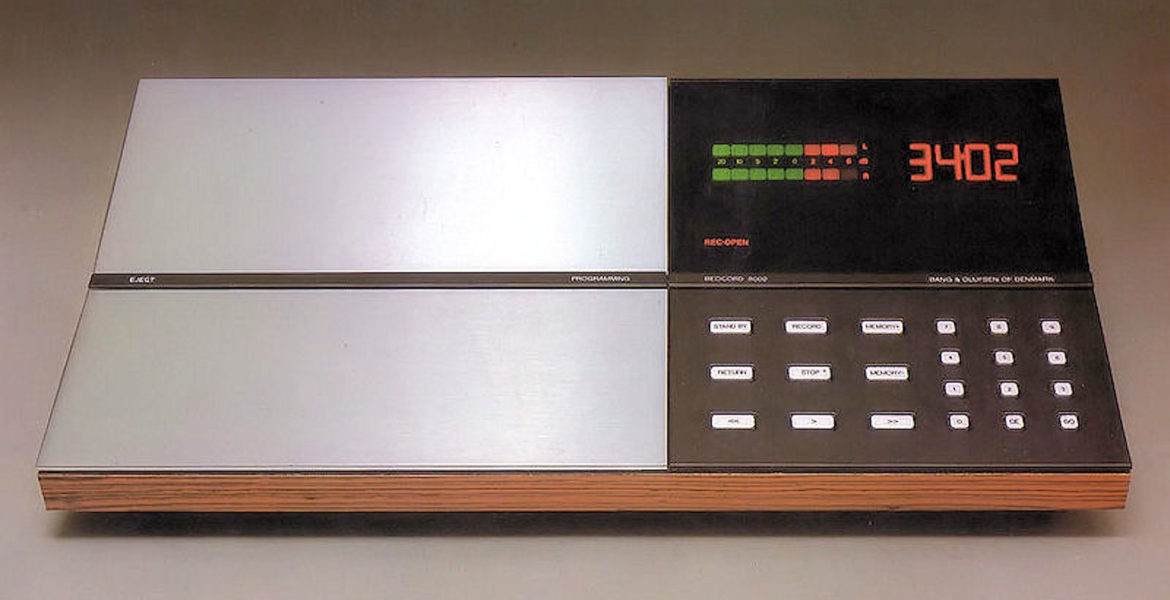It’s difficult to overstate the significance of Compact Cassette as a format in 1979. The Long Playing record was nearing the end of its life cycle – or so we believed – with an increasing number of consumers opting for pre-recorded cassettes over vinyl. At the time, the quality of LP pressings seemed to be plummeting down a cliff, with thin, recycled vinyl that readily warped becoming the norm. Simultaneously, cassette hardware and software improved dramatically, and now delivered significantly superior performance than just five years before.
The TC-177SD, for example, was Sony’s first effort into high-end cassette in 1974. It was one of the most advanced machines available at the time, with a top loading, dual-capstan, three-head design – but it couldn’t compete with the Sony flagship of just half a decade later in terms of sound quality, features, or performance. Simultaneously, tape formulations have considerably improved since the mid-1970s, with IEC standardizing of all recording medium making getting good sound from Compact Cassette far less hit-or-miss.
In 1979, Sony completely revamped its product line, removing equipment that had been in use for several years and had begun to look and feel dated. The TC-K81 was the top of the new series, and it looked nothing like the company’s prior high-end decks. The TC-229SD, its immediate predecessor, was a massive, bulky, and heavy front-loader with two heads and large analogue VU meters. But now there was a new slimmed-down model, measuring 430x130x290mm and weighing 6.3kg, with three heads, twin capstan drive, advanced bar-graph LED metering, peak-hold capability, and much more…
The TC-K81, which retailed for £399 in 1980 (equivalent to £1,989 today), was a high-end machine that ordinary people could at least dream of owning, unlike top-end Nakamichis, which cost as much as a new vehicle. The Japanese Yen had began its long rise in value by this time, and manufacturers had begun to cut costs, so the new Sony was lighter than the company’s previous flagship decks. It was nevertheless well-made, and unlike its forerunners, it operated with a sensitive, high-precision feel. Unlike the cheaper decks in the new line, which featured a sheet of aluminium clipped over a plastic frame, it had a satin silver pressed steel shell and a matt-finish diecast aluminium front panel.
A small version of Sony’s BSL (Brushless and SlotLess) direct drive motor, which drove the flywheel through a ground flat rubber belt, was at the heart of the TC-K81. This identical motor was also discovered in the tonearm servo drive of the company’s top PS-X800 Biotracer turntable, indicating that it was a true quality item that performed smoothly and quietly. Sony’s new Sendust & Ferrite heads were also installed, which were totally isolated for recording and playback yet aligned with one another to prevent azimuth errors. Sony’s new cassette decks had a cleaner, more modern appearance than previous models, with a big, non-tinted cassette door and lighted tape glass, as well as accurate logic-controlled transfer buttons. The end product was a utilitarian-looking fascia that was also ergonomically good and quite self-explanatory to use. The outstanding tape calibration system, which was accessed through the ‘Cal’ knob, worked in conjunction with the LED level metres to allow fine tuning of the deck’s recording level calibration and bias.
Metal tape compatibility was another major ‘wow factor.’ This arrived less than a year before the Sony deck was released, so it was an early implementation — yet it was done flawlessly. The new Sendust & Ferrite heads of the TC-K81 were able to record higher levels than prior models’ Ferrite & Ferrite heads, as well as resisting the intrinsically more abrasive character of this new tape formulation. The record/replay heads in my example, which use a Sendust core set into a Ferrite guard block, work just as well now as they did forty years ago.
You could tell how serious this machine’s recording credentials were just by looking at the inscriptions in the metering part if you knew what to look for. Most Japanese manufacturers set the Dolby level reference – an absolute signal magnitude referenced by a calibrated magnetic tape – to roughly +3dB at the time. The TC-K81, on the other hand, was set to -2dB, demonstrating that the deck had significantly more headroom than typical cassette decks. This was a remarkable party trick that resulted in great recordings, as it was capable of recording far higher than the Dolby reference level without distorting.
You could argue that this was one of the first hi-fi stereo cassette recorders of the modern era, as it was compact, stylish, and packed with ‘high tech’ capabilities. At the time, metal tape, peak meters, fine bias, and record calibration all appeared to be very amazing. However, it may be viewed as the dying gasp of the older generation in many aspects. Most inexpensive cassette decks, for example, were quieter, measured better, and featured ingenious features unimaginable to Sony when the TC-K81 was released in the late 1980s. There is no Dolby C or S noise reduction, no built-in DAC like some of the recent Aiwas, and no powered cassette door, for example. Metering is fantastic, but it got even better when it was paired with digital tape counters that displayed real-time data — unlike Sony’s previous mechanical system.
It performed admirably for its time – few decks performed better at any price. With Type IV (Metal) tape, the claimed frequency response was 20Hz to 20kHz; with Type I (Ferric), it was a very respectable 20Hz to 16kHz. The signal-to-noise ratio was given as 65dB (with Dolby B in), and the wow and flutter percentages were given as 0.04 percent. The output was a meagre 0.435V at line level (compared to a nominal 2V line out from a modern CD player today). These are all impressive numbers for the time, but by the mid-1990s, an entry-level Sony tape deck had outperformed them. Such was the never-ending march of progress…
However, its performance isn’t particularly antique — in fact, it produces excellent recordings for a deck of its era. It stands head and shoulders beyond previous generations of high-end Sonys in my opinion, thanks in large part to the exceptional dual capstan transport and calibration capabilities. It means you can feed it a cheap TDK D ferric tape and be blown away by how clean and open everything sounds. Even better, you may record at high settings – up to +4dB – without any noticeable distortion. It’s not quite Nakamichi territory, but it’s still rather impressive for a deck that first appeared in British stores in 1980.
What does this mean in terms of sound quality? So, to put it another way, you can take a budget tape and squeeze the living daylights out of it. The iconic budget formulation of the 1980s, TDK D sounds slightly opaque and loose in the bass and smooth in the treble, but there isn’t much of a difference when switching between source and tape monitor while it records. Switch to TDK SA Type II tape, reset the bias, and record calibration, and you’ll notice a significant difference in sound. You can see why so many people bought this tape; it cost twice as much as D but sounded better by a factor of two. There’s a lot more air and space in the upper mids and treble than before, and TDK D’s little vagueness on hi-hat cymbals, for example, has been replaced by a much more accurately defined metallic shine. Things tighten up a lot in the bass, and the music overall sounds more defined and energetic.
After resetting the calibrations, try Sony Ferrichrome – the company’s top tape formulation before Metal – and you’ll be pleasantly delighted once more. The midband cleans up even more, and there’s a greater sense of detail throughout the soundstage, as well as a better three-dimensional scale. The bass is even tighter, while the treble is less tinselly and more sharply etched. The deck rockets ahead when you switch to TDK MA, a Type IV Metal composition. With this, you can really push the recording levels up, and the sound is much more dynamic; the music has a lot more intensity as it gets closer to open reel. The bass is more powerful, the midband is clearer and more defined, and the treble is brighter, more etched, and more sparkly. Metal tape was a revelation at the time, even if it was out of reach for most people at roughly £10 a pop.
Although the transport and heads on this deck are great, my only complaint is that the electronics aren’t quite as nice — it’s quiet enough, but things sound a little too dry and missing in genuine low-level detail. Later cassette decks from all brands improved substantially in this area; for example, I discovered that top-end Nakamichis were affected as well. The electronics on this ZX9 were noticeably less warm and open sounding than, say, the CR7 from the mid-eighties.
The Sony TC-K81 was a real class act at a time when both hi-fi and cassette technology were in flux, even if it wasn’t the best tape deck in the world at the time. It had genuine audiophile features, almost no gimmicks, and superb performance, allowing users to get fantastic results from any tape – inexpensive or high end – capable of doing so. It’s strange, therefore, that it’s faded from memory merely because its brand name isn’t current enough for some, when it so richly deserves better.






